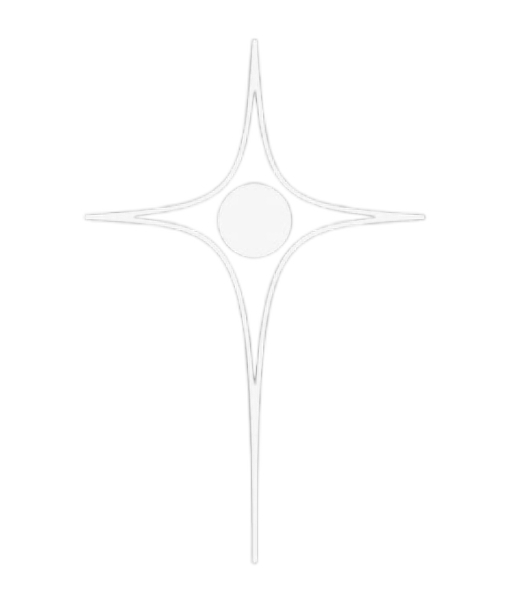784𝕸
⦵2025
To Build A Machine
✶ Dreams as a Data Source
Can intuition be measured? Can the unconscious anticipate what has not yet arrived?
Science is the language of structure—methodological, measurable, repeatable.
Dreams are the language of emergence—unstructured, symbolic, fleeting.
Somewhere in between, we are searching for a third path.
For centuries, Buddhist and Vedic traditions have positioned precognition as a byproduct of deep meditative states—a sharpening of the mind that allows perception to move beyond linear time. Western research, by contrast, has often dismissed such ideas, demanding proofs that intuition and foresight could be mechanized, quantified, replicated.
But what if both perspectives are incomplete?
This work does not seek to validate precognition as an anomaly—it seeks to explore whether existing methodologies in future research lack an essential component: the recognition of intuition as an operationalizable function of the human mind.
In other words, if precognition exists, we have been measuring it incorrectly.
C/O Giáng Mi Nguyen
784𝕸
⦵2025
To Build A Machine
✶ DREAMS, INTUITION, AND THE ARCHITECTURE OF THE FUTURE
The classical approach to future research relies on scenario analysis—a process of structuring probabilities and desirabilities into potential worlds that could emerge. These methodologies are human-centered, yet they are bound by cognitive models that exclude subjective, symbolic, and non-linear forms of intelligence.
But what if dreams are already conducting scenario analysis?
🔹 The unconscious does not move through time; time moves through the unconscious.
🔹 Intuition is not an abstract feeling—it is an embodied, neurophysiological process.
🔹 Pattern recognition during sleep mirrors the same processes we use to predict and anticipate reality.
From a neuroscientific perspective, rapid eye movement (REM) sleep is not just a phase of rest—it is a phase of hyper-association, where theta oscillations structure memory consolidation, insight, and creativity (Sederberg et al., 2003). The very brain mechanisms involved in pattern recognition and intuitive decision-making are also implicated in dream cognition and the experience of precognition (Bolte & Goschke, 2005).
Carl Jung (1974) argued that the unconscious does not follow a chronological order—it is a simultaneity of past, present, and potential. The very foundation of psychoanalysis rests on the assumption that dreams anticipate the psyche’s trajectory before the conscious mind does.
If future research is about understanding what has not yet happened, we must ask:
Are we excluding the most advanced predictive system we already have—the unconscious mind?
Can dream data be integrated into structured scenario analysis to enhance futures research methodologies?
And if so, how do we extract, measure, and validate this data without reducing it into meaninglessness?
C/O Giáng Mi Nguyen
784𝕸
⦵2025
To Build A Machine
✶ THE SELF AS A TEMPORAL INTERCEPTION
If the mind is predictive, the self is not fixed.
If the unconscious structures time differently than the conscious mind, then identity itself is fluid—constantly recomposing itself through emergent patterns and imperceptible anticipations.
We are not who we were five years ago.
We are not who we will be five years from now.
And yet, something in us already knows what we are becoming.
What this research seeks to explore is whether the past, present, and future are already intersecting within us—and whether we can learn to see it.
Precognition may not be supernatural.
It may simply be the future, already existing within the present, waiting to be decoded.
If that is true, then scenario analysis as we know it is incomplete.
And intuition, long dismissed as irrational, may in fact be the most advanced tool for understanding the world we have ever had.
C/O Giáng Mi Nguyen
784𝕸
⦵2025
To Build A Machine
✶ TOWARD A NEW SCIENTIFIC FRAMEWORK
If we accept that dreams contain data, we must also accept that we have been measuring the wrong variables.
This work is a call to reconfigure how we structure knowledge, how we measure intuition, how we integrate subjective and symbolic inputs into scenario-building.
To reimagine the future of future research.
To ask not just what will happen—but what already has, in a way we have not yet learned to perceive.
Because if the future is already embedded in the present, then the act of research is not prediction.
It is remembrance.
And perhaps, by learning to see with different eyes, we will discover that the future is already written—not in reason, but in dreams.
C/O Giáng Mi Nguyen
784𝕸
⦵2025
To Build A Machine
✶ INVITATION TO COLLABORATE
This work is ongoing. If you are interested in collaborating, participating in the experiment, or exploring new methods of integrating subjective and unconscious intelligence into structured research, contact us.
[Join the Research]
[Download Full Paper]
[Support the Experiment]

